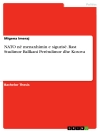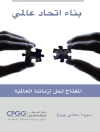When India was invented as a ‘modern’ country in the years after
Independence in 1947 it styled itself as a secular, federal,
democratic Republic committed to an ideology of development.
Nehru’s India never quite fulfilled this promise, but more recently
his vision of India has been challenged by two ‘revolts of the
elites’: those of economic liberalization and Hindu nationalism.
These revolts have been challenged, in turn, by various movements,
including those of India’s ‘Backward Classes’. These movements have
exploited the democratic spaces of India both to challenge for
power and to contest prevailing accounts of politics, the state and
modernity.
Reinventing India offers an analytical account of the
history of modern India and of its contemporary reinvention. Part
One traces India’s transformation under colonial rule, and the
ideas and social forces which underlay the deliberations of the
Constituent Assembly in 1946 to consider the shaping of the
post-colonial state. Part Two then narrates the story of the making
and unmaking of this modern India in the period from 1950 to the
present day. It pays attention to both economic and political
developments, and engages with the interpretations of India’s
recent history through key writers such as Francine Frankel,
Sudipta Kaviraj and Partha Chatterjee. Part Three consists of
chapters on the dialectics of economic reform, religion, the
politics of Hindu nationalism, and on popular democracy. These
chapters articulate a distinct position on the state and society in
India at the end of the century, and they allow the authors to
engage with the key debates which concern public intellectuals in
contemporary India.
Reinventing India is a lucid and eminently readable
account of the transformations which are shaking India more than
fifty years after Independence. It will be welcomed by all students
of South Asia, and will be of interest to students of comparative
politics and development studies.
Mục lục
Acknowledgements.
Abbreviations.
Glossary.
Map 1 Territorial growth of the East India Company, to 1843.
Map 2 Contemporary India.
Preface.
Part 1: The Invention of Modern India.
Chapter 1: The Light of Asia? India in 1947.
Chapter 2: ‘Sovereign, Democratic, Federal, Socialist, Secular’:
the Invention of Modern India.
Part Two: Contesting Modernity.
Chapter 3: the ‘Tall Men’ and the ‘Third way’: Nehru, Patel and
the Building of Modern India.
Chapter 4: Jealous Populism, Crises and Instability: Indira’s
India.
Chapter 5: Drifting Towards Catastrophe: The Powerlessness of
the Congress.
Chapter 6: ‘Elite Revolts’: Reforming and Reinventing India in
the 1990s.
Part Three: The Reinvention of India.
Chapter 7: The Dialectics of Reform: the State and Economic
Liberalization.
Chapter 8: The Guilty men? Militant Hinduism and the Politics of
Anti-Secularism.
Chapter 9: Transfers of Power? Subaltern Politics, Sites of
Empowerment and the Reshaping of India’s Democracy.
Chapter 10: Conclusion.
Notes.
References.
Index
Giới thiệu về tác giả
Stuart Corbridge is Professor of International Studies, University of Miami and Fellow of Sidney Sussex College, Cambridge University. John Harriss is Reader in Development Studies at the London School of Economics.












